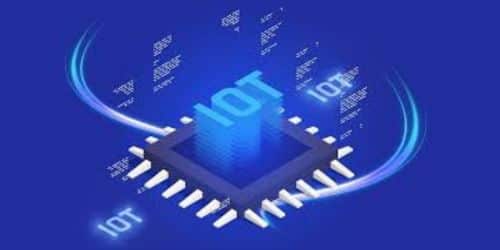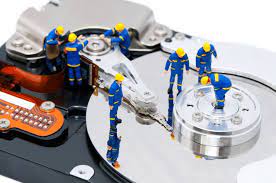The Internet of Things (IoT) is a technological revolution that has transcended limitations and opened doors to a future only our imaginations can envision. This is evidenced by the introduction of smart homes that anticipate our needs, industrial systems that optimize productivity, healthcare solutions that improve patient outcomes, and sustainable cities that enhance our quality of life. Imagine being away from home and being able to regulate things from wherever you are, trust me, IoT is one astounding innovation. In fact, it’s simply the driving force behind a new wave of digital transformation. This guide explores what IoT is about, its types, its development, and applications in industry, as well as other aspects of our daily lives.
Understanding IoT
IoT, or the Internet of Things, refers to the network of interconnected physical devices, vehicles, appliances, and other objects embedded with sensors, software, and connectivity capabilities that enable them to collect as well as exchange data. IoT applications span various industries and have the potential to revolutionize the way we live and work. The following are some of the most common IoT applications:
#1. Smart Home
IoT enables the automation and control of various devices in a home, such as lighting, thermostats, security systems, and appliances. This simply means that users can remotely monitor and control these devices through smartphones or voice assistants.
#2. Industrial Internet of Things (IIoT)
IIoT is the application of IoT in industrial sectors. Generally, it involves connecting machinery, sensors, and equipment to gather data for predictive maintenance, process optimization, supply chain management, and remote monitoring of industrial operations.
#3. Smart Cities
IoT also plays a crucial role in creating efficient and sustainable cities. We see this in smart traffic management, waste management, energy optimization, public safety, environmental monitoring, as well as infrastructure management.
#4. Wearable Devices
IoT is integrated into wearable devices like smartwatches, fitness trackers, and medical devices. These devices collect and transmit data about health and fitness metrics, allowing users to track their activities, monitor vital signs, and also receive personalized insights.
#5. Connected Cars
In terms of connecting cars, IoT enables connectivity and communication between vehicles, infrastructure, and the driver. This simply means connected cars can provide features like real-time navigation, predictive maintenance, remote diagnostics, entertainment systems, and enhanced safety through collision detection in addition to automated emergency services.
#6. Agriculture
IoT applications are also visible in the agriculture sector, where we see the development of real-time data about soil moisture levels, weather conditions, crop health, and livestock tracking. Generally, farmers use this data to optimize irrigation, crop management, and livestock monitoring. As a result, we see increased productivity and resource efficiency in this sector.
#7. Healthcare
IoT applications in healthcare include remote patient monitoring, telemedicine, smart medical devices, as well as asset tracking in hospitals. IoT applications can collect patient data, facilitate timely interventions, and also improve healthcare delivery and patient outcomes.
#8. Retail and Inventory Management
In the retail and inventory management sector, IoT enables retailers to monitor inventory levels, track products, optimize supply chain logistics, and also enhance customer experiences. RFID tags, beacons, and smart shelves help streamline inventory management and improve in-store operations.
#9. Energy Management
IoT can be utilized for smart energy management, including smart grid systems, energy monitoring, demand response, as well as home automation. It enables better energy consumption analysis, conservation, and the integration of renewable energy sources.
#10. Environmental Monitoring
IoT devices equipped with sensors and connectivity can monitor air quality, water quality, pollution levels, and weather conditions. Generally, you can use the information in environmental conservation, early warning systems, and urban planning.
What Are the Applications of IoT?
The Internet of Things has numerous potential uses when it comes to its applications across diverse fields and industries. From healthcare to transportation to business organizations, the list is just endless. These applications enable more efficiency and convenience through the monitoring, control, and analysis of devices and systems in real time. We can also say, they seamlessly automate processes while making it easy to track and monitor them.
IoT Applications Development
IoT (Internet of Things) application development refers to the process of creating software and systems that enable devices to communicate and interact with each other over the Internet. Moreover, IoT has gained significant popularity in recent years, as it enables the connection of various devices and enables them to collect, exchange, and analyze data in real-time. Sounds simple, right? Well, here’s the hidden truth, developing IoT applications requires expertise in hardware engineering, software development, data analytics, as well as security. It’s not that simple because it’s a multidisciplinary field that combines various technologies to create innovative solutions for connecting and controlling devices in the digital age.
Key Components Of IoT Applications Development
The following are the key components of IoT application development;
#1. Hardware
IoT applications require physical devices equipped with sensors, actuators, and connectivity modules. These devices can range from simple sensors to complex systems like industrial machinery or smart home devices.
#2. Connectivity
IoT devices need to connect to the internet to transmit and receive data. They can use various communication protocols such as Wi-Fi, Bluetooth, Zigbee, cellular networks, or even satellite connections.
#3. Data Management
IoT applications generate massive amounts of data. Effective data management involves collecting, storing, as well as analyzing data to extract meaningful insights. This typically involves cloud-based platforms that can handle the scalability and processing requirements of IoT data.
#4. Application Development
Developing IoT applications involves creating a software layer that enables devices to communicate, interact, and perform specific tasks. This includes designing user interfaces, implementing communication protocols, as well as integrating with data management systems.
#5. Security
Security is a critical aspect of IoT applications. With a large number of connected devices, ensuring data privacy, authentication, and protection against cyber threats is crucial. Developers need to implement robust security measures at various levels, including device authentication, encryption, and secure data transmission.
What Are the Four Types of IoT Applications?
The four types of IoT applications are as follows
- Consumer IoT (CIoT)
- Commercial IoT (CoIoT)
- Industrial IoT (IIoT)
- Infrastructure IoT (IoT)
How Is IoT Used in Everyday Life?
The concept of IoT has become increasingly prevalent in various aspects of everyday life, not just because it is at the peak of technology but also because of the numerous benefits and conveniences it offers. The following are some common examples of how IoT is used in everyday life:
#1. Smart Home Automation
In the home, we see the daily use of IoT in areas such as lighting, thermostats, security systems, and appliances. People who use these devices can remotely monitor and control them through their smartphones or voice assistants.
#2. Wearable Device
These days, we see IoT used in the fitness and healthcare industries with wearable devices such as smartwatches, fitness trackers, and health monitors. These devices collect data on activities, heart rate, sleep patterns, and more, providing valuable insights for personal health management.
#3. Smart Appliances
We also use IoT in appliances like refrigerators, ovens, washing machines, and coffee makers to control and monitor them remotely. For example, anyone can adjust the temperature of their refrigerator, preheat their oven, or start their washing machine from a smartphone app.
#4. Connected Cars
Daily, we use the IoT to enable connectivity and communication with vehicles. Generally, it offers features like GPS navigation, real-time traffic updates, vehicle diagnostics, and remote control functions. Moreover, connected cars can also transmit data about road conditions, fuel levels, and maintenance needs.
#5. Healthcare Monitoring
IoT devices play a vital role in remote patient monitoring and healthcare management. Patients with chronic conditions can use connected devices to measure vital signs, send the data to healthcare providers, and receive real-time feedback or alerts.
#6. Smart Cities
IoT is utilized to make cities more efficient and sustainable. Connected sensors and devices can monitor and control street lighting, waste management, parking spaces, traffic flow, air quality, and energy consumption, leading to improved resource management and reduced environmental impact.
#7. Industrial Applications
IoT is extensively used in industries for optimizing processes, monitoring equipment performance, and ensuring efficient resource utilization. Industrial IoT (IIoT) applications include predictive maintenance, supply chain optimization, inventory management, and quality control.
#8. Agriculture
IoT technologies are employed in smart agriculture to monitor soil moisture levels, temperature, and humidity, enabling farmers to make data-driven decisions regarding irrigation, fertilization, and crop management. It improves crop yield, reduces resource waste, and enhances overall efficiency.
#9. Retail and Inventory Management
IoT devices help retailers track inventory levels, monitor product conditions, and automate restocking processes. Retailers can use IoT-enabled beacons to send personalized offers and notifications to customers’ smartphones while they are in-store.
#10. Energy Management
IoT enables homeowners and businesses to monitor and manage energy consumption efficiently. Smart meters and connected devices provide real-time data on energy usage, allowing users to identify areas for improvement and optimize energy consumption patterns.
IoT (Internet of Things) Home Devices
IoT (Internet of Things) home devices are becoming increasingly popular as they offer various benefits and conveniences for homeowners. Here are five common applications of IoT home devices:
#1. Smart Home Security
IoT devices such as smart door locks, security cameras, and motion sensors can enhance home security. These devices can be connected to a central hub or controlled remotely through a smartphone app, allowing homeowners to monitor their homes, receive alerts, and even remotely control access to their property.
#2. Energy Management
IoT devices can help homeowners manage and optimize energy usage in their homes. Smart thermostats, for example, can automatically adjust temperature settings based on occupancy and outside weather conditions. Smart plugs and power strips enable the monitoring and control of energy consumption by individual devices, allowing users to identify energy-hungry appliances and reduce waste.
#3. Home Automation
IoT devices enable automation and control of various home functions. Smart lighting systems can be programmed to turn on or off automatically or be controlled remotely, offering convenience and energy savings. Home assistants like Amazon Echo or Google Home use voice commands to control IoT devices, play music, answer questions, and perform a range of other functions.
#4. Health Monitoring
IoT devices can be used for health monitoring within the home. For instance, wearable fitness trackers or smartwatches can collect data on physical activities, heart rate, sleep patterns, and more. These devices can sync with smartphones or other platforms to provide users with valuable insights and motivate them to make healthier choices.
#5. Home Entertainment
IoT devices have revolutionized home entertainment. Smartphones or voice commands can control smart TVs, stream content from various services, and connect to the internet. Additionally, IoT-enabled speakers and sound systems can provide high-quality audio and be integrated with other smart devices for a seamless entertainment experience.
Where Is IoT Mostly Used?
According to TechTarget, IoT is mostly used in manufacturing, transportation, and utility organizations,
Industry IoT Applications
The term “industrial IoT” describes the use of Internet of Things (IoT) technology development and principles in manufacturing environments to boost productivity, streamline procedures, and fuel creativity. Industries like factories, power plants, oil refineries, and transportation networks are the primary targets of the Industrial Internet of Things (IIoT). The “industrial Internet of Things” suggests less boldly that automation, connectivity, and analytics will lead to greater operational efficiencies. It empowers industries with advanced connectivity, data-driven insights, and intelligent automation, leading to increased productivity, reduced costs, improved safety, and better decision-making. It’s safe to say that it helps businesses modernize their operations, enhance their procedures, and discover the untapped potential for growth and innovation.
Aside from streamlining and automating processes, businesses are increasingly turning to IIoT solutions because they are cost-effective. According to Particle, industry IoT is expected to generate about $1.4 trillion and $3.3 trillion by 2030 (or 26 percent of the entire IoT market value, respectively).
To better understand and optimize manufacturing processes, sensors are used in the IIoT to collect data from interconnected devices. Actuators and programmable controllers can also be used in the IIoT to facilitate communication and control of connected devices.
Features of Industry IoT
IoT’s essential features include the following:
#1. Connectivity
Connectivity is essential to the IIoT because it enables the exchange of data across the many machines, systems, and devices used in industrial settings. It makes use of cloud computing, industrial protocols (such as Modbus and OPC-UA), and wired and wireless networks to facilitate data interchange and real-time monitoring.
#2. Data Collection and Analytics
IIoT involves the collection of vast amounts of data from connected devices and sensors within industrial settings. This data is then processed, analyzed, and transformed into meaningful insights using advanced analytics techniques such as machine learning and artificial intelligence. The insights derived from data analysis can help optimize processes, improve productivity, and enable predictive maintenance.
#3. Remote Monitoring and Control
Through IIoT, factories can keep tabs on their machinery and processes from afar. From command centers or even mobile devices, operators and engineers can access real-time data, track performance, and exercise remote control over machines and systems. This feature facilitates quicker decision-making, less downtime, as well as more operational efficiency.
#4. Predictive Maintenance
Predictive maintenance plans rely heavily on the IIoT. Monitoring equipment health and performance via sensors and gathering information on elements like temperature, vibration, and energy usage make it possible to foresee failures or maintenance requirements. This enables preventative maintenance planning, which in turn lessens equipment downtime and boosts overall efficiency.
#5. Supply Chain Optimization
Tracking and monitoring items, resources, and inventory throughout the production and distribution processes can be greatly improved with the use of IIoT. Improved productivity and savings can be realized as a result of its ability to facilitate real-time tracking, inventory management, demand forecasting, and efficient transportation.
#6. Safety and Security
With IIoT, businesses can rest assured that their facilities will be as secure as possible. Environments can be tracked, abnormalities identified, and warnings issued in the event of threats or security lapses. In addition to protecting industrial networks, devices, and data from cyber threats, IIoT uses robust security measures.
What Are the Most Common IoT Applications?
The following are the most common IoT applications:
- Self-driven Cars.
- IoT Retail Shops
- Farming.
- Wearables.
- Smart Grids.
- Industrial Internet.
- Telehealth.
- Smart Supply-chain Management.
What Are the 5 Applications of IoT Home Devices?
The following are five common applications of IoT home devices:
- Smart Home Security
- Energy Management
- Home Automation
- Health Monitoring
- Home Entertainment
IoT Applications Example
The following are a few examples of IoT applications;
- Industrial Automation
- Smart Agriculture
- Healthcare Monitoring
- Traffic Management
- Supply Chain Optimization
- Environmental Monitoring
- Smart Retail
Related Articles
- AI ENGINEERING: What They Do & How to Become One
- GPS TRACKING SOFTWARE: Best GPS Tracking Software 2023
- BENEFITS OF JOURNALING: Tips & Why You be keeping Journal
- WHAT IS EDGE COMPUTING: What It Is & Why It Matters
- SEO COMPANIES DALLAS: Top 11+ Dallas SEO Companies






